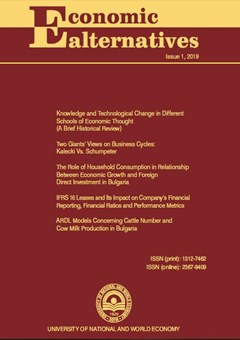Two Giants’ Views on Business Cycles: Kalecki vs. Schumpeter
Author: Z. Tugrul Gover
Abstract
Kalecki and Schumpeter used distinct models to analyse the economic system by examining business cycles. Both economists thought that depression, which was an integral phase of the cyclical movements of the economic system, was inherent in capitalism. Although they had similar views on the nature of capitalism, Kalecki and Schumpeter differed considerably from one another with regard to the initial factor that led to the emergence of business cycles. Kalecki stated that the changes in the profitability of investments and the size of fixed capital equipment determined the change in fixed capital investments, and that business cycles emerged as a consequence. Conversely, Schumpeter argued that the main reason for the emergence of business cycles was lopsided, discontinuous, and disharmonious innovations. As a result of such innovations, the economic system moved away from the equilibrium and into business cycles. Given these diverging views, this study explains Kalecki’s and Schumpeter’s business cycle models individually, compare them and reveal the common features in the two models.

